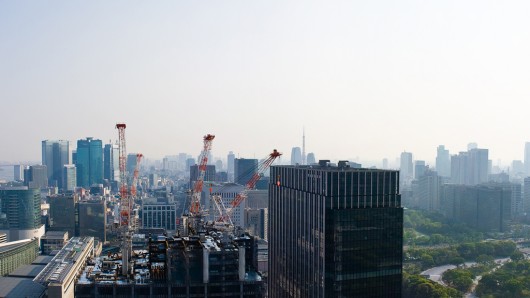
Solar geoengineering could lead to whiter skies, similar to the hazy and white effect often seen in urban areas (Photo: Shutterstock)
We’ve already heard reports that placing small, reflective particles into the upper atmosphere could actually improve crop yields, but would also significantly reduce the amount of electricity generated by solar power plants and do little to arrest the acidification of the world’s oceans. Now another potential side effect has been theorized by Californian researchers, who say that solar geoengineering could lead to whiter skies.
Solar geoengineering is designed to mimic the cooling effect on the planet that results from large volcanic eruptions spewing small particles into the stratosphere that reflect sunlight back into space. While the volcanic particles fall back to Earth after a couple of years, allowing the planet to heat up again, solar geoengineering efforts would constantly replenish a layer of small particles in the stratosphere to help offset the rise in temperatures caused by global warming.
Using advanced models, Ben Kravitz and Ken Caldeira from the Carnegie Institution of Science and Douglas MacMartin from the California Institute of Technology, examined what would happen to the color and brightness of the sky if sulfate-based aerosols were placed into the stratosphere.
What they found was that, depending on the size of the particles, the sky would whiten to a lighter shade of blue during the day, an effect seen in urban areas where the sky often appears hazy and white. Blocking just two percent of the Sun’s light would also result in the sky being three to five times brighter. Additionally, sunsets would have an afterglow.
“These results give people one more thing to consider before deciding whether we really want to go down this road,” Kravitz said. “Although our study did not address the potential psychological impact of these changes to the sky, they are important to consider as well.”
While previous research carried out at Carnegie indicates global crop yields would benefit from solar geoengineering’s potential to cool the planet without affecting CO2 levels, the researchers say changes to the color of the sky would also have an effect on plant life. Because plants grow more efficiently under diffuse light conditions, there is the possibility that global photosynthetic activity would increase, reducing the amount of CO2 in the atmosphere.
Caldeira hopes the team’s work will help discourage any move towards implementing solar engineering.
“I hope that we never get to the point where people feel the need to spray aerosols in the sky to offset rampant global warming,” Caldeira said. “This is one study where I am not eager to have our predictions proven right by a global stratospheric aerosol layer in the real world.”
The researchers' work is published in the journal Geophysical Research Letters.
Source: Carnegie Institution of Science
Copyright © gizmag 2003 - 2012 To subscribe or visit go to: http://www.gizmag.com